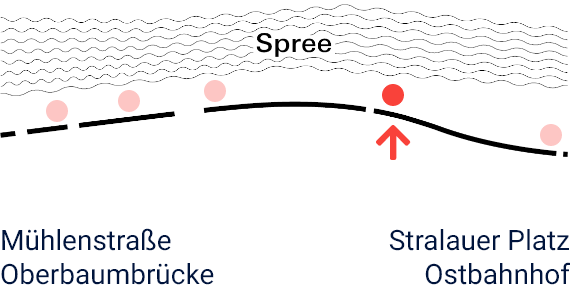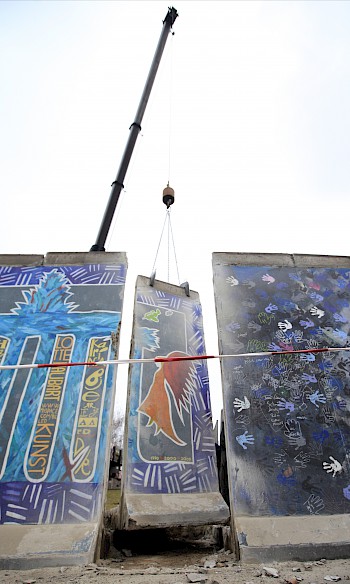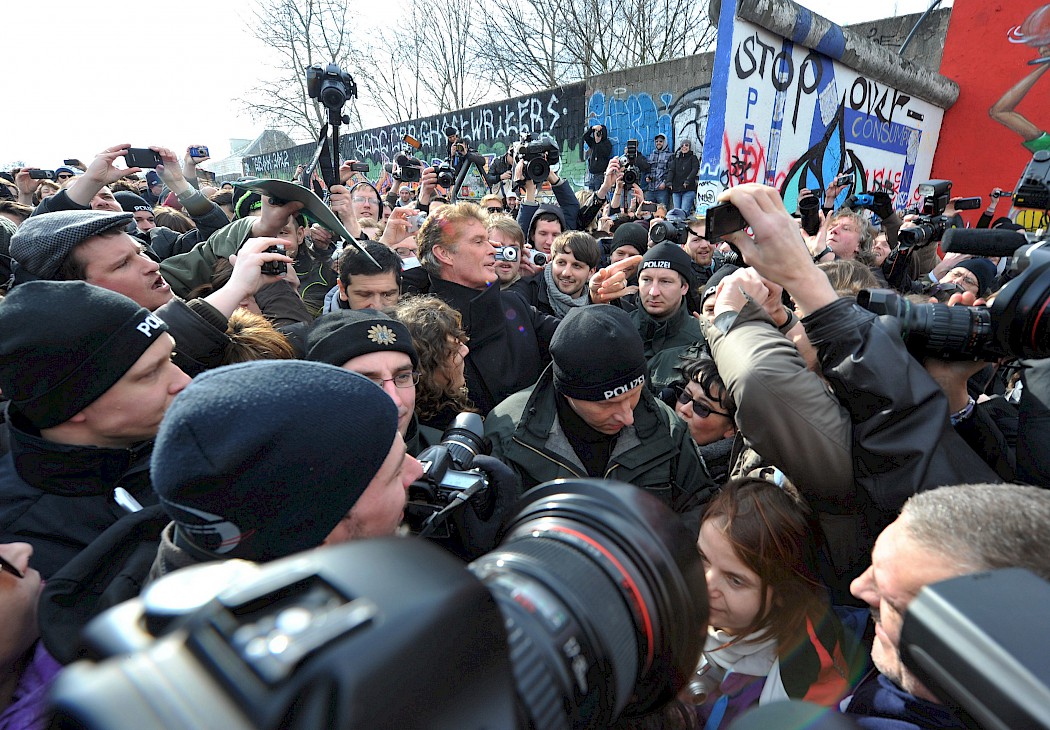1961
1990
2013

Until 1945 a road led over the 1909-built Brommy Bridge to Kreuzberg. At the end of the Second World War, the German Wehrmacht blew up the bridge to stop the advance of the Soviet army. One of the bridge’s foundations can still be seen in the Spree today. There had also been buildings along the riverbank here. After the Berlin Wall was built in 1961, they stood in the high-security border area; most were demolished by 1977. GDR border soldiers patrolled the riverbank and the Spree. But in 1979 one young man still managed to escape: He jumped from a boat into the water and swam to the western bank.
"It’s a memorial, it can’t be replaced."
A few months after the fall of the Wall in 1989, 118 people from 21 countries came here to paint on the Berlin Wall. On 28 September 1990, the East Side Gallery was opened. Nobody expected the painted Wall to stay. An advertising agency even made plans to send the painted Wall segments on a world tour and then sell them. But the state of Berlin listed the East Side Gallery in November 1991.
"And they put up a high-rise there."
Located right by the river in the newly unified centre of Berlin, the East Side Gallery occupied an area of land with great potential for development — in an urban planning perspective. In 1992, the Berlin Senate quickly drew up the plans for its development; they were approved in the 2000s. Protest was voiced by public initiatives such as East Side Gallery retten! and Mediaspree versenken. They achieved partial success, convincing the district Friedrichshain-Kreuzberg to stop development before all the planned structures were built. The Gallery was largely preserved in its original location, but four artworks were moved to make way for access roads to the new buildings.


The Trabi driving clean through the Wall stands for the Peaceful Revolution. To Birgit Kinder, the artist who painted it, it symbolises the power of the people. Her painting of 1990, Test the Best, conveyed her excitement at being able to get to know the West. In 2009 she changed the title to Test the Rest to criticise the fact that the East Side Gallery was not preserved intact.